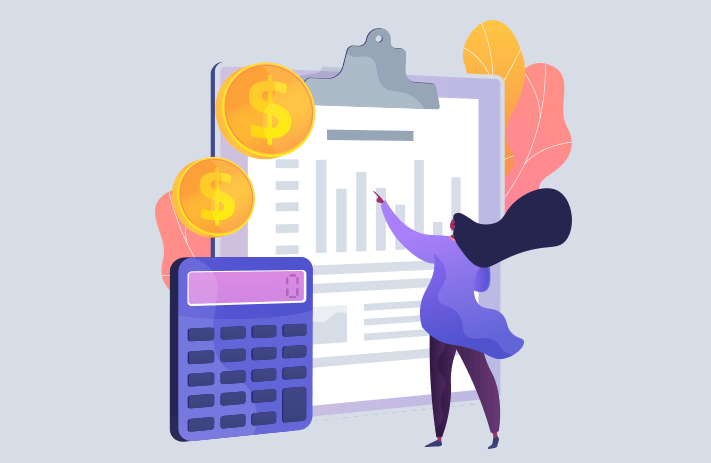Introduction
Understanding and managing costs is critical for financial success in today’s competitive business world. Cost analysis, a powerful tool for evaluating expenses, is key in helping businesses make informed decisions. In this guide, we’ll explore what cost analysis is, the types of cost analysis, and the steps involved in conducting one effectively. If you’re looking to optimize your budget, cut costs, or increase profitability, understanding cost analysis is essential.
What Is Cost Analysis?
Cost analysis is a systematic approach to examining a company’s expenses to understand their impact on profitability and financial performance. By analyzing the costs associated with production, operations, or specific projects, businesses gain insights into areas where they can reduce waste and increase efficiency. Cost analysis provides a foundation for strategic decision-making and helps companies allocate resources optimally.
Why Is Cost Analysis Important?
Effective cost analysis enables companies to:
- Improve budgeting accuracy
- Enhance resource allocation
- Identify cost-saving opportunities
- Increase profitability by optimizing spending
These benefits make cost analysis a valuable tool across various industries and business sizes.
Types of Cost Analysis
- Fixed vs. Variable Cost AnalysisThis type of analysis focuses on categorizing costs into fixed and variable types. Fixed costs, such as rent and salaries, remain constant regardless of production volume, while variable costs, like materials and utilities, fluctuate with production levels. Understanding this distinction helps businesses predict how costs will change as operations scale up or down.
- Marginal Cost AnalysisMarginal cost analysis looks at the cost of producing one additional unit of output. This type of analysis is vital for pricing decisions, as it helps determine the minimum price needed to break even on each additional unit. Marginal cost analysis is especially useful in manufacturing and production environments.
- Direct vs. Indirect Cost AnalysisDirect costs are expenses directly associated with a product or project, such as raw materials and labor. Indirect costs, or overheads, include expenses like utilities, administration, and maintenance. By distinguishing between direct and indirect costs, businesses can calculate product-specific expenses and make informed pricing decisions.
- Opportunity Cost AnalysisOpportunity cost analysis considers the potential benefits of choosing one option over another. By evaluating the foregone profit from unchosen alternatives, companies can assess the true cost of their decisions. This type of analysis is essential for resource allocation and strategic planning.
- Activity-Based Costing (ABC)Activity-Based Costing assigns costs to specific activities or processes rather than spreading expenses across departments. By understanding which activities drive costs, businesses can pinpoint inefficiencies and make targeted improvements. ABC is widely used in industries with complex operations and diverse products.
The Process of Conducting Cost Analysis
1. Define Objectives and Scope
Start by clearly defining the objectives of the cost analysis. Are you aiming to reduce production costs, improve budget accuracy, or evaluate project feasibility? Establishing a scope helps narrow down the focus areas and makes data collection more manageable.
2. Gather Cost Data
Collect all relevant data on costs, including fixed and variable costs, direct and indirect expenses, and any other financial records related to the analysis. Use data from financial statements, production reports, and expense logs to ensure accuracy.
3. Categorize and Classify Costs
Once you have the data, classify costs based on their type—fixed, variable, direct, or indirect. This classification helps organize expenses and provides a clearer understanding of cost behavior, which is crucial for analysis.
4. Analyze Costs Using the Appropriate Method
Depending on the purpose, apply the relevant cost analysis type. For example:
- For pricing decisions: Use marginal cost analysis.
- For resource allocation: Conduct opportunity cost analysis.
- For efficiency improvements: Apply Activity-Based Costing.
By choosing the right method, the analysis becomes more relevant and insightful.
5. Interpret and Report Findings
Present the analysis results in a format that is understandable and actionable. Highlight key findings, such as areas where costs can be reduced or processes that could be improved. Use visual aids like graphs, charts, and tables to illustrate the data for clarity.
6. Implement Recommendations
Use the insights gained from the analysis to make informed decisions. Implement cost-saving strategies, adjust budgets, and monitor the impact of these changes over time. This ongoing process helps maintain cost efficiency and drives profitability.
Applications of Cost Analysis in Business
- Budgeting and Forecasting Cost analysis is essential for developing accurate budgets. By examining past expenses and predicting future costs, businesses can set realistic budgets that account for fixed and variable expenses.
- Pricing Strategy Setting the right price is crucial for profitability. Cost analysis, especially marginal and activity-based costing, allows companies to establish pricing strategies that cover costs and yield profit.
- Resource Allocation With opportunity cost analysis, businesses can make smarter decisions on resource allocation. By evaluating potential returns from different projects or investments, they can prioritize those with the highest potential benefit.
- Performance Measurement Cost analysis can reveal inefficiencies in production or operational processes. By understanding which activities incur the most cost, businesses can improve processes to reduce waste and boost performance.
Tips for Effective Cost Analysis
- Use Automation and Cost Management Tools Many accounting and financial software solutions offer cost analysis features that automate data collection and calculation, saving time and improving accuracy.
- Maintain Accurate Records Reliable cost analysis depends on accurate data. Ensure that all financial records are updated and well-organized to facilitate a smooth analysis process.
- Regularly Review and Adjust As costs change over time, regular analysis allows businesses to adjust their budgets and strategies to stay aligned with financial goals.
Conclusion
Cost analysis is a powerful tool that provides valuable insights into a business’s expenses, enabling smarter decision-making and improved profitability. Whether you’re managing budgets, setting prices, or allocating resources, understanding what cost analysis is and how to apply it can create a competitive advantage. By following a structured approach and using the right analysis methods, businesses can control costs effectively, identify improvement areas, and pave the way for long-term financial health.



